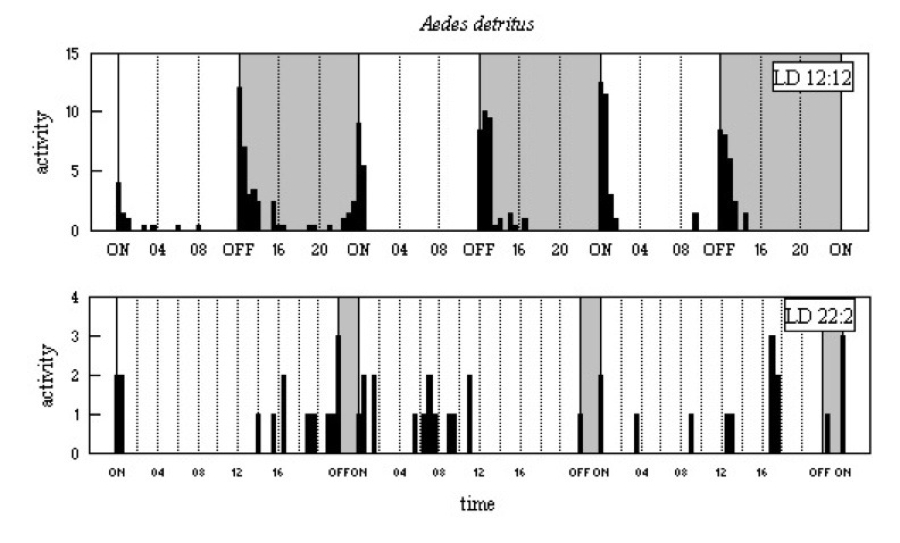Biological Clocks in Mosquitoes
|
 A
Palaearctic species of coastal and inland saline areas, type locality
Holywood, Downshire, N. Ireland (Stone et al., 1959). It is
found from up to 60°N in Fennoscandia and southwards throughout Europe;
also in the Canary Islands, Tunisia and Egypt, south to 30°N (Natvig
1948). Adults may be found in Britain all months of the year although
they are rare in December, January and February (Marshall 1938). Snow
(1990) indicated that it is a multivoltine species with successive
generations overlapping throughout the summer and winter, and that both
eggs and larvae may overwinter.
A
Palaearctic species of coastal and inland saline areas, type locality
Holywood, Downshire, N. Ireland (Stone et al., 1959). It is
found from up to 60°N in Fennoscandia and southwards throughout Europe;
also in the Canary Islands, Tunisia and Egypt, south to 30°N (Natvig
1948). Adults may be found in Britain all months of the year although
they are rare in December, January and February (Marshall 1938). Snow
(1990) indicated that it is a multivoltine species with successive
generations overlapping throughout the summer and winter, and that both
eggs and larvae may overwinter.
Experimental material
All the adults were trapped biting man at Morden Bog, Dorset, England
(50°41'N) on the evenings of 24 and 25 July 1968 (sunrise 0516h and
sunset 2056h BST, daylength 15h40m) and were recorded from 29 July.
Recordings were made with light-off at 2100h BST.
Experimental regimes
LD 12:12, two females, recorded for days two to five.
LD 22:2, one female, recorded for days two to seven.
Results and discussion
The patterns of activity are shown in Figure A14 below. Activity in LD
12:12 is bimodal, with E and M peaks, both with
activity for 1.5-2h. In LD 22:2 the single female showed diffuse
activity with two high points at light-off.
Figure A14

|
©1998, 2010 - Brian Taylor CBiol FSB FRES 11, Grazingfield, Wilford, Nottingham, NG11 7FN, U.K. Comments to dr.b.taylor@ntlworld.com |
href="\crhtml\aedetr.htm"